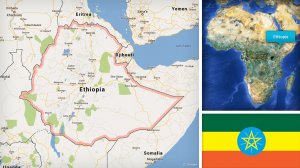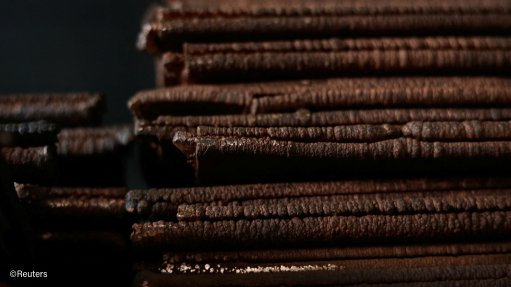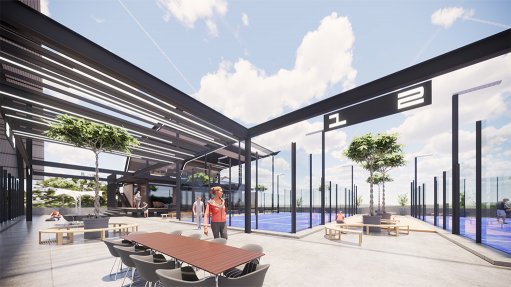Grand Ethiopian Renaissance Dam, Ethiopia
Name of the Project
Grand Ethiopian Renaissance Dam (GERD).
Location
The GERD is located on the Abay river, in the Beneshangul Gumuz region of Ethiopia.
Project Owner/s
Ethiopian Electric Power Corporation (EEPCo).
Project Description
The project envisages a plant with an installed capacity of 6 000 MW that will supply 15 692 GWh/y.
The major components of the project include:
• a 145-m-high, roller-compacted concrete (RCC) dam with a 1 780-m-long crest;
• a rock-filled saddle dam, 4 800 m long and 45 m high, with 24 upstream bituminous facing;
• two outdoor powerhouses of 3 750 MW and 2 250 MW installed capacity, containing ten and six generating units respectively, each with a capacity of 375 MW; and
• a 500 kV switchyard, which will transmit power from the two powerhouses to the grid.
The main dam and saddle dam will create 74-billion cubic metres of impounding capacity, with a surface area of 1 680 km2 at full capacity.
A gated spillway, equipped with six radial gates and a discharge capacity of 14 700 m3/s at probable maximum flood occurrence will be located on the left side of the main dam.
A saddle dam on the left side of the RCC dam, with an emergency side spillway, is envisaged to allow for the discharge of floodwater directly into the Roseires reservoir.
The construction of 123 km of access roads, as well as camps, workshops and other civil works, form part of the activities for the project.
Potential Job Creation
Not stated.
Capital Expenditure
The project is valued at an estimated $4.8-billion.
Planned Start/End Date
In January, Ethiopia's Water and Energy Minister said that, following construction delays, the dam would start production by the end of 2020 and be fully operational by 2022.
Latest Developments
A last attempt to resolve a decade-long dispute between Egypt and Ethiopia over the GERD project has failed, raising the stakes in what is a tussle for control over the region’s most important water source.
The talks appear to have faltered over a recurring issue – Ethiopia’s refusal to accept a permanent, minimum volume of water that the GERD should release downstream in the event of severe drought.
Ethiopia has threatened to start filling the dam’s reservoir when the rainy season begins in July, regardless of a deal, which Egypt considers unacceptable and illegal. Egypt’s irrigation ministry has accused Ethiopia of refusing to accept any effective drought provision or legally binding commitments, or even to refer the talks up to the level of Prime Minister to break the deadlock. Ethiopia is demanding “an absolute right” to build further dams behind the GERD, the ministry has said.
Egypt Foreign Minister Sameh Shoukry has threatened to call for United Nations Security Council intervention to protect “international peace and security”, if no agreement is reached. Shoukry’s counterpart, Gedu Andargachew, has accused Egypt of “acting as if it is the sole owner of the Nile waters.”
Egyptian billionaire Naguib Sawiris has warned of a water war. “We will never allow any country to starve us. If Ethiopia doesn’t come to reason, we, the Egyptian people, will be the first to call for war,” he said in a tweet.
Although both sides have played down the prospect of military conflict, they have occasionally rattled sabres. Concern about the potential for escalation attracted the attention of the US and World Bank, which joined the negotiating process last year. When that attempt floundered in February, the European Union and South Africa, as chair of the African Union, joined in.
Egypt’s concern is that once the dam’s sluices open, Ethiopia can control the Nile’s flow and could withhold water during drought. However, San Diego State University professor of mechanical engineering Asfaw Beyene supports Ethiopia’s claims that once filled, the dam will not significantly affect downstream supplies. He also agrees with their argument that climate change could render any water guarantees given to Egypt unsustainable.
Both sides describe the future of the hydropower dam as a matter of national survival. Egypt relies on the Nile for as much as 97% of an already strained water supply. Ethiopia says the dam is vital for development because it will increase the nation’s power generation by about 150% at a time when more than half the population have no access to electricity.
Though more than 6 400 km long, the Nile is – in water terms – poor. The river discharges on average only 1.4% as much water as the Amazon, one-sixth of the water discharged by the Mississippi and less than half of the water discharged by the Danube. Those water volumes are predicted to be further reduced by climate change.
Further, the populations along the Nile are some of the fastest growing in the world. In 1954, when Egypt decided to build the High Aswan dam, the combined population of Egypt, Ethiopia and Sudan (including the current South Sudan) was 51-million. That figure is now an estimated 272-million. In 2050, according to UN population projections, it will be 466-million.
Key Contracts and Suppliers
Salini Costruttori, a subsidiary of Salini Impregilo; GE Hydro France, China Gezhouba Group Corp, Voith Hydro Shanghai and China's Sinohydro Corp (construction contract); Alstom (turbine and generators).
Contact Details for Project Information
EEPCo, tel +251 11 1 55 95 67, fax +251 11 1 57 1860 or email eepcocommunication@yahoo.com.
Comments
Press Office
Announcements
What's On
Subscribe to improve your user experience...
Option 1 (equivalent of R125 a month):
Receive a weekly copy of Creamer Media's Engineering News & Mining Weekly magazine
(print copy for those in South Africa and e-magazine for those outside of South Africa)
Receive daily email newsletters
Access to full search results
Access archive of magazine back copies
Access to Projects in Progress
Access to ONE Research Report of your choice in PDF format
Option 2 (equivalent of R375 a month):
All benefits from Option 1
PLUS
Access to Creamer Media's Research Channel Africa for ALL Research Reports, in PDF format, on various industrial and mining sectors
including Electricity; Water; Energy Transition; Hydrogen; Roads, Rail and Ports; Coal; Gold; Platinum; Battery Metals; etc.
Already a subscriber?
Forgotten your password?
Receive weekly copy of Creamer Media's Engineering News & Mining Weekly magazine (print copy for those in South Africa and e-magazine for those outside of South Africa)
➕
Recieve daily email newsletters
➕
Access to full search results
➕
Access archive of magazine back copies
➕
Access to Projects in Progress
➕
Access to ONE Research Report of your choice in PDF format
RESEARCH CHANNEL AFRICA
R4500 (equivalent of R375 a month)
SUBSCRIBEAll benefits from Option 1
➕
Access to Creamer Media's Research Channel Africa for ALL Research Reports on various industrial and mining sectors, in PDF format, including on:
Electricity
➕
Water
➕
Energy Transition
➕
Hydrogen
➕
Roads, Rail and Ports
➕
Coal
➕
Gold
➕
Platinum
➕
Battery Metals
➕
etc.
Receive all benefits from Option 1 or Option 2 delivered to numerous people at your company
➕
Multiple User names and Passwords for simultaneous log-ins
➕
Intranet integration access to all in your organisation





















